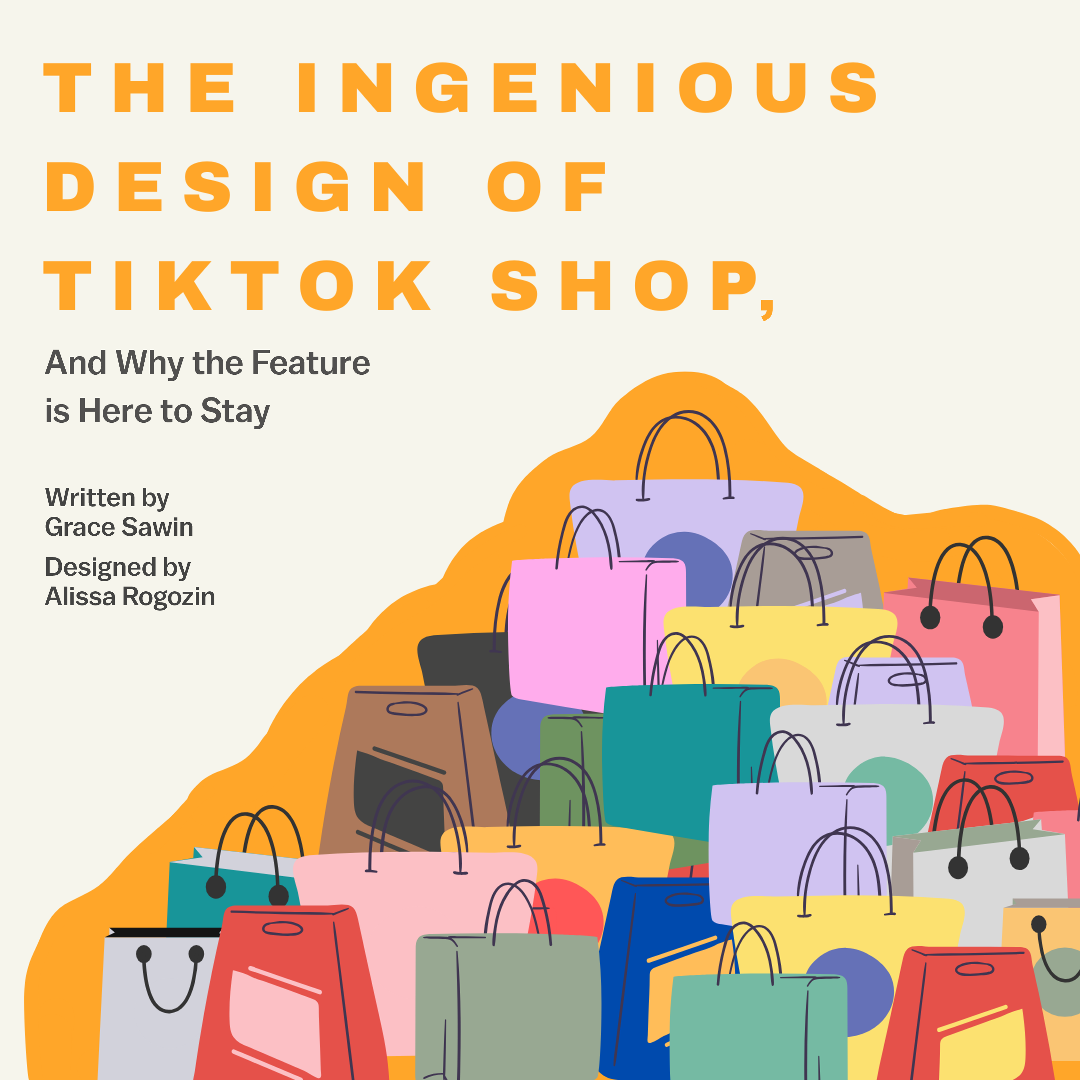
A couple of weeks ago, my roommate and I were completing our favorite Sunday ritual: meal prepping. Although the meals change each time, we tend to use the same few ingredients. Recently, we’ve consumed exceptionally large quantities of tofu. So, naturally, we decided we needed a tofu press.
My first instinct was to check Amazon, but, to my surprise, the prices were unusually high. Defeated, I switched tabs and started scrolling through TikTok, an unfortunate habit I’ve held on to since I first downloaded the app in 2019. As I was surfing my recommended videos, I was suddenly hyper aware of the number of ads flooding my page.
And then it dawned on me: why don’t I just buy my tofu press from TikTok Shop? At this point, I had failed to find a competitive price and the pages I followed appeared to receive their package in one piece.
Within five minutes, I had fallen victim to TikTok’s unrelenting shopping feature. Their persistent, and frankly annoying ads had finally gotten to me.
So, what exactly is TikTok Shop and why is it everywhere?
If you’ve been on TikTok anytime over the past year, you’ve likely noticed the “shop” tab at the top of your For You Page.
This feature, called TikTok Shop, launched last September. It enables users to purchase items directly in the app while also allowing individual vendors to sell their products. Once a buyer saves their card and address during their first purchase, all it takes is one click.
The introduction of the feature was a massive success. In 2023, it generated $3.8 billion in consumer spending, and that number is only expected to grow.
But how is TikTok Shop any different than other online stores, like Shein and Temu, which are often under fire for their unethical practices?
The simple answer: It’s not. Although TikTok Shop has individual merchants, the majority of their products are mass produced. This allows for unexplainably cheap products and never ending coupons. The one thing that sets TikTok Shop apart from its competitors is its invaluable free marketing.
Any person with an account can advertise a product, and although the practice was traditionally reserved for influencers early on, now people with much smaller, or even no platform at all, can be found endorsing a product, with the “creator gets commission” tag at the bottom of their videos.
Before our eyes, TikTok has transformed into an e-commerce platform. The app is highly sensitive to user activity, creating a masterfully crafted page that is eerily personalized to consumers, a valuable asset in selling products.
Yet, the rise of TikTok Shop’s popularity coincides with a new trend calling out rampant consumerism and overconsumption. Now, users are seeing less and less of the massive hauls and PR unboxings that once dominated the For You Page, instead replaced by “underconsumption core” and the introduction of a new term: “de-influencing,” where influencers discourage their followers from buying unnecessary products. “No spend” challenges are also on the rise, where influencers try to spend as little as possible in a set timeframe.
It is entirely possible that this new trend is exactly just that: a trend. TikTok is extremely conducive to rapid trend-cycling, perhaps more than any other social media platform, because its primary content consists of short 10-15 second videos. The app has even earned itself a reputation of slashing people’s attention spans like no other. Although underconsumption videos are newer, the volume of videos flooding the For You Page are already on the decline.
As TikTok Shop’s persistent ads increase alongside calls for underconsumption, it will be interesting to see if the app’s performance will be affected. Although “underconsumption core” will likely be another victim of rapid trend-cycling, the idea has already been planted into the minds of millions.
For now, it looks like TikTok Shop will only continue to grow.